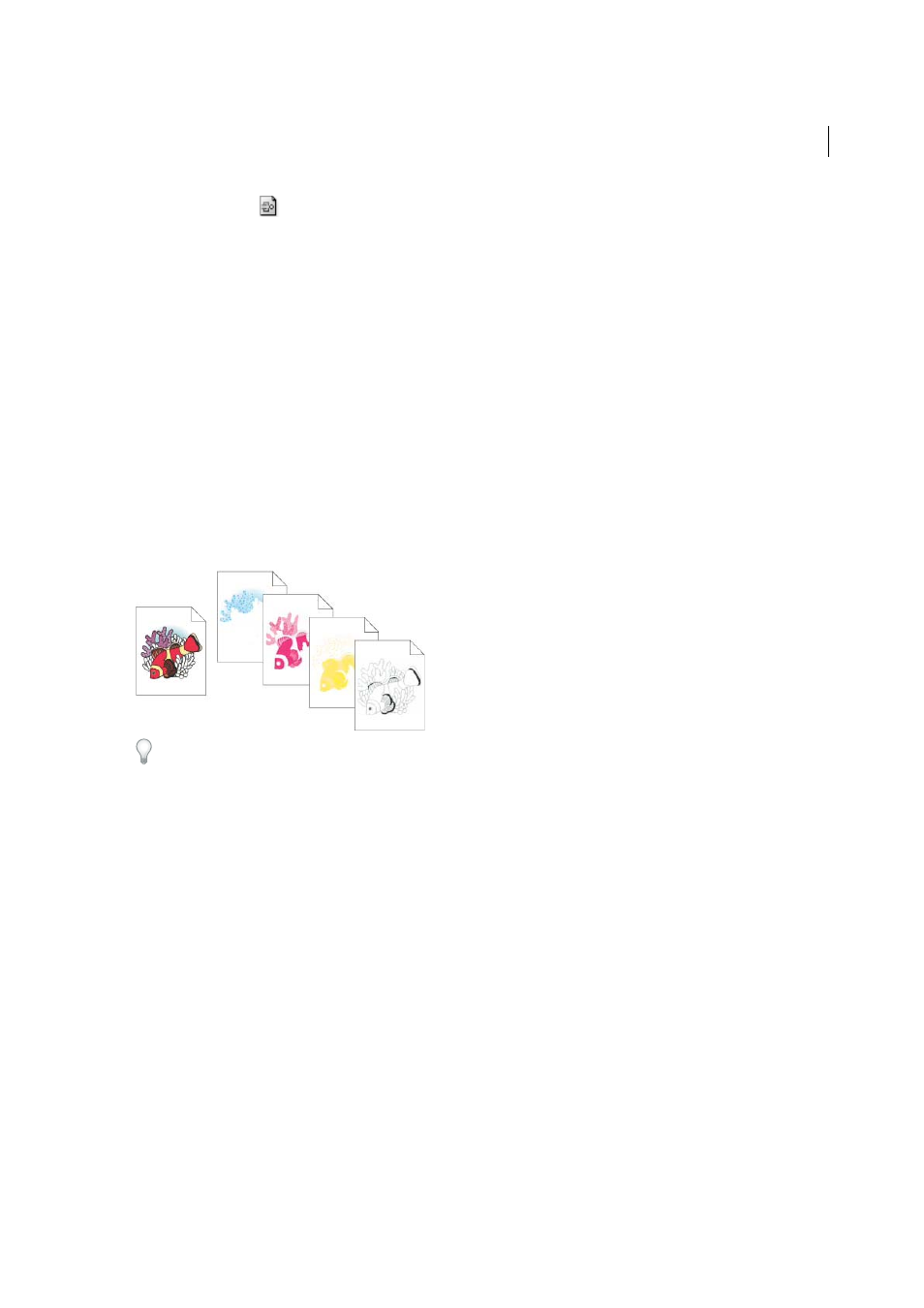Printing color separations, About color separations, Preparing artwork for color separating – Adobe Illustrator CC 2015 User Manual
Page 479

474
Printing
Last updated 6/5/2015
Landscape Right
Prints in landscape orientation, rotated to the right.
4
(Optional) Select Transverse to rotate the printed artwork 90°. To use this option, you must use a PPD that supports
transverse printing and custom page sizes.
Printing color separations
About color separations
To reproduce color and continuous-tone images, printers usually separate artwork into four plates (called process
colors)—one plate for each of the cyan, magenta, yellow, and black portions of the image. You can also include custom
inks (called spot colors). In this case, a separate plate is created for each spot color. When inked with the appropriate
color and printed in register with one another, these colors combine to reproduce the original artwork.
The process of dividing the image into two or more colors is called color separating, and the film from which the plates
are created are called the separations.
To produce high-quality separations, you should work closely with the print shop that will produce your separations,
consulting its experts before beginning each job and during the process. To see a video on using the Separations Preview
panel, see
More Help topics
Preparing artwork for color separating
Before you print color separations from Illustrator, it’s a good idea to perform the following prepress tasks:
• Set up color management, including calibrating your monitor and selecting an Illustrator Color Setting.
• Soft-proof how color will appear on the intended output device. Choose Window > Separations Preview to preview
how the color separations will look.
• If the document is in RGB mode, choose File > Document Color Mode > CMYK Color to convert it to CMYK Mode.
• If your artwork contains color blends, optimize them so that they print smoothly (without discrete bands of color).
• If your artwork requires trapping, set up appropriate overprinting and trapping.
• If your artwork contains areas of transparent, overlapping colors, preview which areas will be affected by flattening
and note which flattening options you want to use.